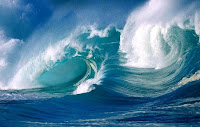Friday, December 18, 2009
Tuesday, November 24, 2009
Sunday, November 22, 2009
FUN FACTS: What is a black hole?
FUN FACTS: Ocean Tides... Why are they not constant?
What is the average temperature of the planets and the sun?
The Universe, Our Milky Way, Our Solar System.


 Now that we know about each of our Solar Systems planets we will learn a few about the Universe. As we all know we live on a ball of rock called Earth in a vast expanse called Space. Besides Earth, there are other planets, billions of stars, and other pieces of rock and dust in space. The name for all this we have learned is what is known to be called The Universe. No astronaut nor scientist knows exactly where the Universe begins or ends. So in other terms we can think of the Universe as a place that goes on forever! Naturally the question of where all of this started is expected, well most scientist think that the Universe was created billions of years ago by a massive explosion called The Big Bang. After the enormous explosion that created the entire Universe, billions of years passed and galaxies started forming. Like the Milky Way Galaxy, which is where our Solar system is located.
Now that we know about each of our Solar Systems planets we will learn a few about the Universe. As we all know we live on a ball of rock called Earth in a vast expanse called Space. Besides Earth, there are other planets, billions of stars, and other pieces of rock and dust in space. The name for all this we have learned is what is known to be called The Universe. No astronaut nor scientist knows exactly where the Universe begins or ends. So in other terms we can think of the Universe as a place that goes on forever! Naturally the question of where all of this started is expected, well most scientist think that the Universe was created billions of years ago by a massive explosion called The Big Bang. After the enormous explosion that created the entire Universe, billions of years passed and galaxies started forming. Like the Milky Way Galaxy, which is where our Solar system is located.Saturday, November 21, 2009
BIO: Pluto And why it is no longer considered a planet.
BIO: Neptune
BIO: Uranus
BIO: Saturn
BIO: Jupiter
BIO: Mars
BIO: Earth
Bio: Venus
Bio: Mercury
Back to Astronomy 101= The Solar System
Arizona State University Astronomy Open House Events
 Credit for image above:(Scott Stuk | The State Press) BY:Scarlett Heydt
Credit for image above:(Scott Stuk | The State Press) BY:Scarlett Heydthttp://homepage.mac.com/agfuentes/openhouse.html
Want more?? Fantastic Observatories in Arizona!
Thursday, November 19, 2009
NASA School of art :)
50,000 year old HUGE crater in AZ!
Cool Stuff! The 7 Most Massive Meteorites on Earth


Monday, November 16, 2009
MCC Astronomy Nights

"Our Astronomy Nights are usually the first Friday of the Month. Dates of upcoming Astronomy Nights are:"
November 6 and December 4, 2009, February 5, 2010
"Planetarium shows begin at 6:00pm and repeat every half hour. The last show begins at 9:30pm and ends at 10:00pm. FREE show tickets are handed out at the event on a first-come, first-served basis. Wait times are usually no more than 30 minutes. If a staff member does not approach you about tickets during the event, please ask for them!"
"No reservations are required. However, if you plan to bring a group of 20 or more, please contact Dr. Kevin Healy with the showing you plan to attend so we can hold tickets for your group."
For more information/address look back to the official website:
(all information posted taken from the website below)
http://www.mc.maricopa.edu/dept/d43/ast/planetarium/astronomynights.html
Astronomy Picture of The Day.

Illustration Credit & Copyright: Mark A. Garlick (Space-art.co.uk)
Explanation: Will this dawn bring another nova? Such dilemmas might be pondered one day by future humans living on a planet orbiting a cataclysmic variable binary star system. Cataclysmic variables involve gas falling from a large star onto an accretion disk surrounding a massive but compact white dwarf star. Explosive cataclysmic events such as a dwarf nova can occur when a clump of gas in the interior of the accretion disk heats up past a certain temperature. At that point, the clump will fall more quickly onto the white dwarf and land with a bright flash. Such dwarf novas will not destroy either star, and may occur irregularly on time scales from a few days to tens of years. Although a nova is much less energetic than a supernova, if recurrent novas are not violent enough to expel more gas than is falling in, mass will accumulate onto the white dwarf star until it passes its Chandrasekhar limit. At that point, a foreground cave may provide little protection, as the entire white dwarf star will explode in a tremendous supernova.
How do we know that the universe even exsist? Is there proof?
The most basic instrument regarding recent discoveries of the universe is called the Telescope. This instrument enables astronomers to see distant objects in space and record the information. Telescopes work like this

The bigger and more powerful telescopes are located in large buildings known as observatories. Many of them are found on high lands (better for clear starry nights, which enables us to look at the sky more clearly through a telescope.)















